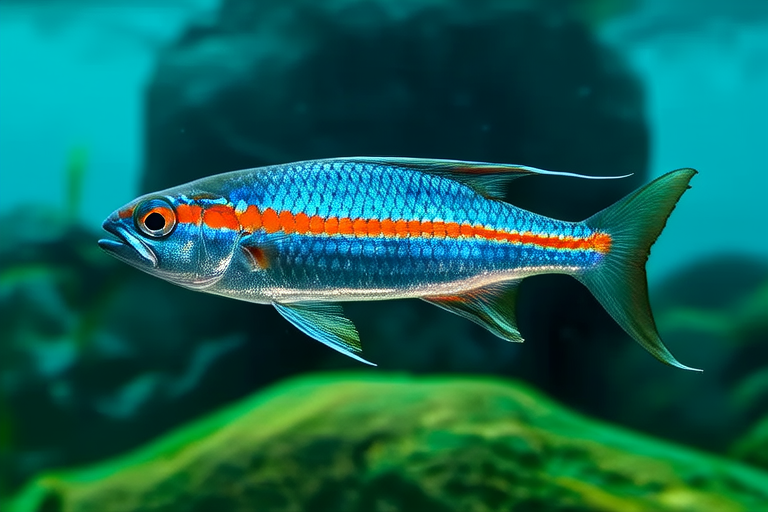Top Secrets for Raising a Healthy Rajah Cichlid: Your Ultimate Guide
Welcome to your comprehensive guide on raising healthy Rajah Cichlids. Whether you’re a seasoned aquarist or just starting out, this guide will provide you with all the necessary information to ensure your Rajah Cichlids thrive in their environment. We’ll cover tank setup, water parameters, diet, breeding habits, common health issues, and behavioral insights specific to Rajah Cichlids.
Understanding Rajah Cichlids
Rajah Cichlids (Apistogramma cacatuoides) are native to the Amazon River basin and are known for their vibrant colors and intricate patterns. These cichlids are relatively small, typically reaching lengths of 2 to 3 inches, making them suitable for smaller aquariums. However, their care requirements are quite specific, and understanding these needs is crucial for their well-being.
Tank Setup
The first step in providing a healthy environment for your Rajah Cichlids is setting up an appropriate tank. A 20-gallon tank is recommended for a single pair, but larger tanks are better for groups to reduce aggression and stress. The tank should have plenty of hiding spots, such as caves, driftwood, and plants. Java moss and Java fern are excellent choices for providing natural hiding places and improving water quality. Adequate filtration is also essential, as Rajah Cichlids are sensitive to poor water conditions.
Water Parameters
Maintaining the right water parameters is critical for the health of Rajah Cichlids. They prefer soft, slightly acidic water with a pH between 6.0 and 7.0. The water temperature should be kept between 78°F and 84°F. Regular water changes of 20% weekly are recommended to keep the water clean and free from harmful substances. Water hardness should be kept below 10 dGH to mimic their natural habitat.
Diet
Rajah Cichlids are omnivores and require a balanced diet to stay healthy. A good diet should include high-quality flake food, freeze-dried bloodworms, and brine shrimp. It’s important to feed them small amounts several times a day rather than one large feeding. Overfeeding can lead to poor water quality and health issues. Supplementing their diet with live foods like black worms can also be beneficial.
Breeding Habits
Rajah Cichlids are known for their complex breeding behaviors. Males and females form pairs and choose a suitable spot to lay eggs, often selecting caves or crevices. The female will lay between 50 and 100 eggs, which the male will then fertilize. Both parents guard the eggs and newly hatched fry. To encourage breeding, provide ample hiding spots and avoid overcrowding the tank. Once the fry hatch, they can be fed infusoria or commercially available fry food.
Common Health Issues
Like any other fish, Rajah Cichlids can suffer from various health issues. One of the most common problems is Ichthyophthirius multifiliis, commonly known as Ich. This parasite causes white spots on the fish’s body and fins. Another common issue is fin rot, which can be caused by poor water quality or physical damage. Regular monitoring of water parameters and maintaining good hygiene practices can help prevent these issues. If you notice any signs of illness, it’s important to act quickly and consult a veterinarian specializing in aquatic animals.
Behavioral Insights
Rajah Cichlids are generally peaceful and can coexist with other non-aggressive species of similar size. However, they can become territorial during breeding periods. It’s important to monitor their behavior and intervene if necessary to prevent aggressive interactions. Providing ample hiding spots can help reduce stress and promote peaceful coexistence.
Unique Aspects of Caring for Rajah Cichlids
Caring for Rajah Cichlids differs significantly from other freshwater species due to their sensitivity to water conditions and their complex breeding behaviors. Their small size and delicate nature mean that they require more attention to detail in terms of tank setup and maintenance. Understanding their unique needs and providing a suitable environment can greatly enhance their quality of life and longevity.
Conclusion
Raising healthy Rajah Cichlids requires careful attention to detail and a commitment to providing the best possible environment. By following the tips outlined in this guide, you can ensure that your Rajah Cichlids thrive and bring joy to your aquarium. Remember, the key to successful fishkeeping is knowledge and dedication. Stay informed about the latest advancements in fish care and continue to learn from experienced aquarists. With the right approach, you can enjoy the beauty and complexity of Rajah Cichlids for years to come.
